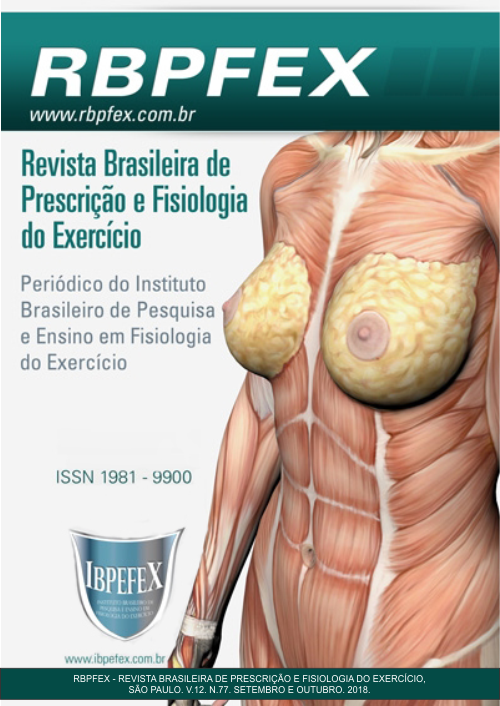Magnitude of cardiovascular effort in adventure corridors through cardiac frequency monitoring
Abstract
This study aimed to determine the intensity of an Adventure Racing (AR), by comparing the Heart Rate (HR) of the participants. The 15 sampled participants accomplished 8th Ulbra Adventure Race, in the city of Cachoeira do Sul, RS, Brazil, and were divided into two groups: trained runners (GT) and untrained runners (GD). The groups were separated after individual interviews about the training history of each participant. The participants' HR were collected throughout the course, using heart rate monitors. The means of the HR in the GT and GD, when starting the race, were 92.8 ± 15.8 bpm and 90.8 ± 17.9 bpm, respectively. When comparing the HR means among groups, GT presented 148.3 ± 15.9bpm and GD presented 165.4 ± 9bpm (p<0.05). When comparing the maximum values of HR, the mean in GT was 189 ± 3.3bpm, and in GD it was 191 ± 6bpm. The rate of work in the maximum HR was 78.2% ± 7 in GT and 86.4% + 4 in GD (p <0.03). The HR means during each modality of the race in GT were: MTB 1 = 164.6 ± 18.9bpm, TREK 1 = 168 ± 14.7bpm, CAN = 130 ± 28 bpm, TREK 2 = 149.6 ± 21.6bpm, MTB 2 = 134.3 ± 21.7bpm. In the GD the following values were obtained: MTB 1 = 172.6 ± 15.4bpm, TREK 1 = 172.9 ± 18.9bpm, CAN = 153.1 ± 14.1bpm, TREk 2 = 171.4 ± 14.2bpm and MTB 2 = 160.8 ± 10.9 bpm. We conclude that AR is a sport characterized by high cardiovascular fitness demand, especially during the running stages. The trained runners presented better performance than the untrained ones.
References
-Costa, V.P.; Oliveira, F.R. A resposta de frequência cardíaca durante as competições de “mountain bike cross-country”. Revista Brasileira de Educação Física e Esporte. São Paulo. Vol. 24. Núm. 3. p. 379-387. 2010.
-Fagundes, A.O. Efeitos de transporte de carga sobre parâmetros cardiorrespiratórios e na economia de corrida em corredores de aventura. Dissertação de Mestrado. Universidade Federal do Rio Grande do Sul. Escola de Educação Física, Programa de Pós-graduação em Ciências do Movimento Humano. Porto Alegre. 2013.
-Schwartz, G.M. Aventuras na natureza: consolidando significados. Jundiaí-SP. Editora Fontoura. 2006.
-Togumi, W. O que é corrida de aventura. Ano: 2011. Disponível em:<http://www.adventuremag.com.br/descrico.php>acesso em 06/06/2016.
Authors who publish in this journal agree to the following terms:
- Authors retain the copyright and grant the journal the right of first publication, with work simultaneously licensed under the Creative Commons Attribution License BY-NC which allows the sharing of the work with acknowledgment of the authorship of the work and initial publication in this journal.
- Authors are authorized to enter into additional contracts separately for non-exclusive distribution of the version of the work published in this journal (eg, publishing in institutional repository or book chapter), with acknowledgment of authorship and initial publication in this journal.
- Authors are allowed and encouraged to post and distribute their work online (eg, in institutional repositories or on their personal page) at any point before or during the editorial process, as this can bring about productive change as well as increase impact and impact. citation of published work (See The Effect of Free Access).






